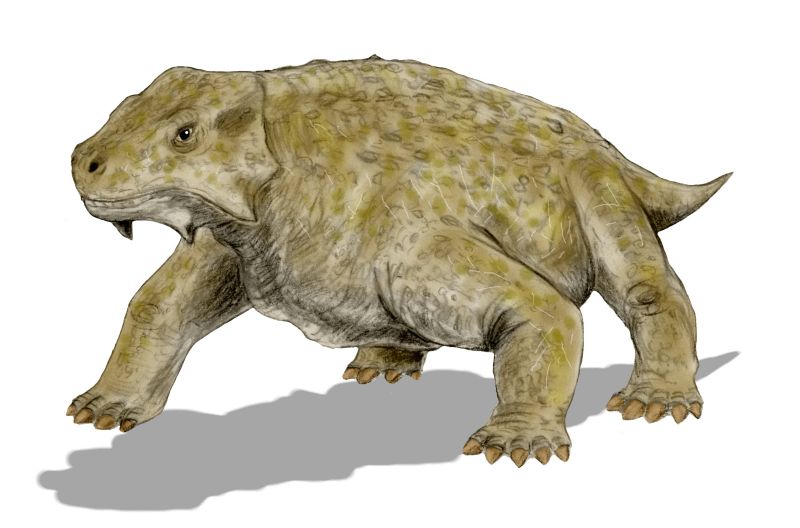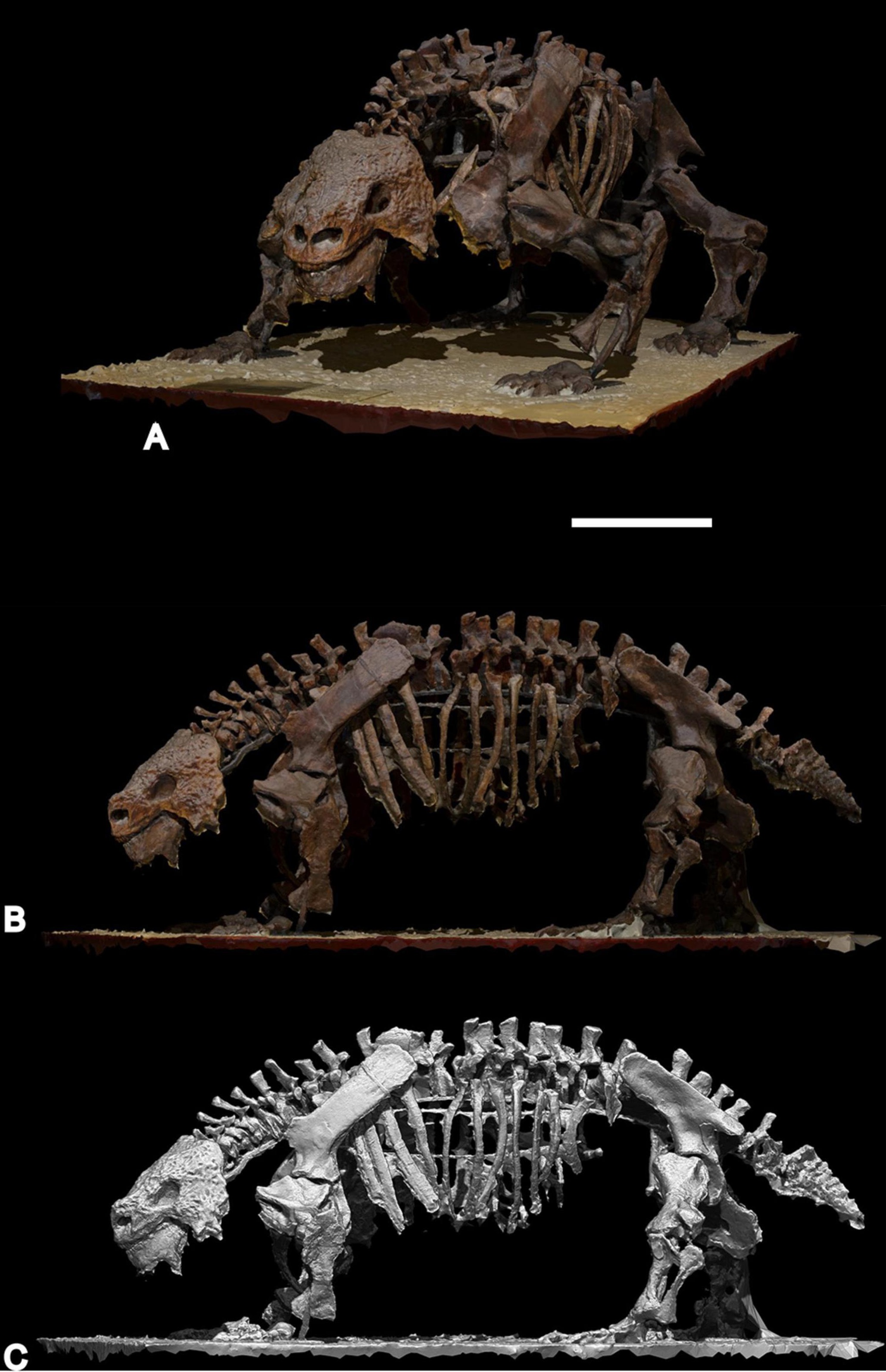|
Nycteroleterid
Nycteroleteridae is a family of procolophonian parareptilians (extinct early reptiles) from the Middle to Late Permian of Russia and North America. They are sometimes classified as a sister group to pareiasaurids (but see ''Classification)''. The group includes the genera ''Macroleter'', '' Bashkyroleter'', ''"Bashkyroleter" mesensis'', ''Nycteroleter'', ''Emeroleter'', and probably ''Rhipaeosaurus''. They were carnivorous, and occasionally ate insects. The group was most common in European Russia, with only a few fossils in North America. One fossil has also been found in Africa, but this is the only one from Gondwana. Classification Nycteroleteridae is sometimes considered a sister group to the Pareiasauridae, but Bayesian inference suggests that it was in fact paraphyletic, with ''Rhipaeosaurus'' a basal member of the Pareiasauridae and other members of the Nycteroleteridae as outgroups. This is supported by the appearance of ''Rhipaeosaurus skull and teeth - it had tricuspid ... [...More Info...] [...Related Items...] OR: [Wikipedia] [Google] [Baidu] |
Rhipaeosaurus
''Rhipaeosaurus'' is an extinct genus of nycteroleterid parareptile known from an articulated skeleton from the mid Middle Permian of European Russia. It contained a single species, ''Rhipaeosaurus tricuspidens''. A bayesian analysis suggests that it is more closely related to pareiasaurs than to the other nycteroleterids, due to skull and tooth features. For this reason, "Nycteroleteridae" may be a grade rather than a clade, unless redefined to exclude ''Rhipaeosaurus''. Description ''Rhipaeosaurus'' is around a meter long, larger than any other "nycteroleterids" and closer in size to later pareiasaurs. Postcranial remains were similar to '' Macroleter'', though the limbs were more robust and the ankle bones were unfused. The teeth were flattened and tricuspid (possessing three cusps), seemingly intermediate in form between the one- or two-cusped teeth of earlier nycteroleterids and the multi-cusped teeth of pareiasaurs. Many components of the partial skull and skeleton (whic ... [...More Info...] [...Related Items...] OR: [Wikipedia] [Google] [Baidu] |
Nycteroleter
''Nycteroleter'' is an extinct genus of nycteroleterid parareptile known from the Middle Permian The Guadalupian is the second and middle series/epoch of the Permian. The Guadalupian was preceded by the Cisuralian and followed by the Lopingian. It is named after the Guadalupe Mountains of New Mexico and Texas, and dates between 272.95 ± 0. ... of European Russia. Fossils were first found in the Mezen River, near to Arkhangelsk. Within the Nycteroleteridae, it is considered most closely related to ''Emeroleter.'' However, its legs were shorter than those of ''Emeroleter'' and its skull was flatter. ''Nycteroleter'' was insectivorous, and may have been nocturnal. It was a small animal, less than a metre long. Classification ''Nycteroleter'' is classified as a primitive procolophonian, related to the Pareiasaur, Pareisauridae. It is not certain whether the nycteroleterids formed a Monophyly, monophyletic or Polyphyly, polyphyletic group, as ''Rhipaeosaurus'' seems to be mor ... [...More Info...] [...Related Items...] OR: [Wikipedia] [Google] [Baidu] |
Pareiasaur
Pareiasaurs (meaning "cheek lizards") are an extinct clade of large, herbivorous parareptiles. Members of the group were armoured with osteoderms which covered large areas of the body. They first appeared in southern Pangea during the Middle Permian, before becoming globally distributed during the Late Permian. Pareiasaurs were the largest reptiles of the Permian, some reaching sizes over , equivalent to the largest contemporary therapsids. Pareiasaurs became extinct in the end-Permian mass extinction event. Description Pareiasaurs ranged in size from long, with some species estimated to exceed in body mass. The limbs of many parieasaurs were extremely robust, likely to account for the increased stress on their limbs caused by their typically sprawling posture. The cow-sized '' Bunostegos'' differed from other pareiasaurs by having a more upright limb posture, being amongst the first amniotes to develop this trait. Pareiasaurs were protected by bony scutes called osteoderms ... [...More Info...] [...Related Items...] OR: [Wikipedia] [Google] [Baidu] |
Tokosaurus
''Macroleter'' is an extinct genus of nycteroleterid parareptile which existed in Oklahoma and Russia during the upper Permian period. It was a quite generalized primitive reptile, in many ways resembling their amphibian ancestors. It was first named by paleontologists Tverdochlebova and Ivachnenko in 1984. According to classification by Michel Laurin and Robert R. Reisz, the genus is a parareptile, belonging to the same branch as Millerettidae, Procolophonidae and other generalized anapsid reptiles. The type species is ''Macroleter poezicus'' from Upper Permian of Russia. ''Macroleter'' had an 8 cm skull, and an overall length of 75 cm. It was generally lizard-like in build with a rather flat and broad skull. The teeth were small and pointy, indication it predominantly hunted insects and other small invertebrates. ''Seymouria agilis'' (Olson, 1980) that is known from only one specimen (holotype UCMP 143 277) was originally thought to be a reptile-like amphibian an ... [...More Info...] [...Related Items...] OR: [Wikipedia] [Google] [Baidu] |
Emeroleter
''Emeroleter'' is an extinct genus of nycteroleterid parareptile known from the early Late Permian of European Russia. It was a long-legged lizard Lizard is the common name used for all Squamata, squamate reptiles other than snakes (and to a lesser extent amphisbaenians), encompassing over 7,000 species, ranging across all continents except Antarctica, as well as most Island#Oceanic isla ...-like small animal with a length about 30 cm. References Lopingian reptiles of Europe Pareiasauromorpha Fossil taxa described in 1997 Prehistoric reptile genera {{paleo-reptile-stub ... [...More Info...] [...Related Items...] OR: [Wikipedia] [Google] [Baidu] |
Macroleter
''Macroleter'' is an extinct genus of nycteroleterid parareptile which existed in Oklahoma and Russia during the upper Permian period. It was a quite generalized primitive reptile, in many ways resembling their amphibian ancestors. It was first named by paleontologists Tverdochlebova and Ivachnenko in 1984. According to classification by Michel Laurin and Robert R. Reisz, the genus is a parareptile, belonging to the same branch as Millerettidae, Procolophonidae and other generalized anapsid reptiles. The type species is ''Macroleter poezicus'' from Upper Permian of Russia. ''Macroleter'' had an 8 cm skull, and an overall length of 75 cm. It was generally lizard-like in build with a rather flat and broad skull. The teeth were small and pointy, indication it predominantly hunted insects and other small invertebrates. ''Seymouria agilis'' (Olson, 1980) that is known from only one specimen (holotype UCMP 143 277) was originally thought to be a reptile-like amphibian an ... [...More Info...] [...Related Items...] OR: [Wikipedia] [Google] [Baidu] |
Pareiasaur
Pareiasaurs (meaning "cheek lizards") are an extinct clade of large, herbivorous parareptiles. Members of the group were armoured with osteoderms which covered large areas of the body. They first appeared in southern Pangea during the Middle Permian, before becoming globally distributed during the Late Permian. Pareiasaurs were the largest reptiles of the Permian, some reaching sizes over , equivalent to the largest contemporary therapsids. Pareiasaurs became extinct in the end-Permian mass extinction event. Description Pareiasaurs ranged in size from long, with some species estimated to exceed in body mass. The limbs of many parieasaurs were extremely robust, likely to account for the increased stress on their limbs caused by their typically sprawling posture. The cow-sized '' Bunostegos'' differed from other pareiasaurs by having a more upright limb posture, being amongst the first amniotes to develop this trait. Pareiasaurs were protected by bony scutes called osteoderms ... [...More Info...] [...Related Items...] OR: [Wikipedia] [Google] [Baidu] |
Parareptilia
Parareptilia ("near-reptiles") is an extinct group of basal sauropsids (" reptiles"), traditionally considered the sister taxon to Eureptilia (the group that likely contains all living reptiles and birds). Parareptiles first arose near the end of the Carboniferous period and achieved their highest diversity during the Permian period. Several ecological innovations were first accomplished by parareptiles among reptiles. These include the first reptiles to return to marine ecosystems (mesosaurs), the first bipedal reptiles ( bolosaurids such as '' Eudibamus''), the first reptiles with advanced hearing systems ( nycteroleterids and others), and the first large herbivorous reptiles (the pareiasaurs). The only parareptiles to survive into the Triassic period were the procolophonoids, a group of small generalists, omnivores, and herbivores. The largest family of procolophonoids, the procolophonids, rediversified in the Triassic, but subsequently declined and became extinct by t ... [...More Info...] [...Related Items...] OR: [Wikipedia] [Google] [Baidu] |
Reptiles
Reptiles, as commonly defined, are a group of tetrapods with an ectothermic metabolism and Amniotic egg, amniotic development. Living traditional reptiles comprise four Order (biology), orders: Testudines, Crocodilia, Squamata, and Rhynchocephalia. About 12,000 living species of reptiles are listed in the Reptile Database. The study of the traditional reptile orders, customarily in combination with the study of modern amphibians, is called herpetology. Reptiles have been subject to several conflicting Taxonomy, taxonomic definitions. In Linnaean taxonomy, reptiles are gathered together under the Class (biology), class Reptilia ( ), which corresponds to common usage. Modern Cladistics, cladistic taxonomy regards that group as Paraphyly, paraphyletic, since Genetics, genetic and Paleontology, paleontological evidence has determined that birds (class Aves), as members of Dinosauria, are more closely related to living crocodilians than to other reptiles, and are thus nested among re ... [...More Info...] [...Related Items...] OR: [Wikipedia] [Google] [Baidu] |
Bashkyroleter
''Bashkyroleter'' is an extinct genus of nycteroleterid parareptile which existed in European Russia during the middle Permian The Permian ( ) is a geologic period and System (stratigraphy), stratigraphic system which spans 47 million years, from the end of the Carboniferous Period million years ago (Mya), to the beginning of the Triassic Period 251.902 Mya. It is the s ... period. References Pareiasauromorpha Guadalupian reptiles of Europe Extinct animals of Russia Prehistoric reptile genera {{paleo-reptile-stub ... [...More Info...] [...Related Items...] OR: [Wikipedia] [Google] [Baidu] |
Tooth
A tooth (: teeth) is a hard, calcified structure found in the jaws (or mouths) of many vertebrates and used to break down food. Some animals, particularly carnivores and omnivores, also use teeth to help with capturing or wounding prey, tearing food, for defensive purposes, to intimidate other animals often including their own, or to carry prey or their young. The roots of teeth are covered by gums. Teeth are not made of bone, but rather of multiple tissues of varying density and hardness that originate from the outermost embryonic germ layer, the ectoderm. The general structure of teeth is similar across the vertebrates, although there is considerable variation in their form and position. The teeth of mammals have deep roots, and this pattern is also found in some fish, and in crocodilians. In most teleost fish, however, the teeth are attached to the outer surface of the bone, while in lizards they are attached to the inner surface of the jaw by one side. In cartila ... [...More Info...] [...Related Items...] OR: [Wikipedia] [Google] [Baidu] |
Scutosaurus
''Scutosaurus'' ("shield lizard") is an extinct genus of pareiasaur parareptiles. Its genus name refers to large plates of armor scattered across its body. It was a large anapsid reptile that, unlike most reptiles, held its legs underneath its body to support its great weight. Fossils have been found in the Sokolki Assemblage Zone of the Malokinelskaya Formation in European Russia, close to the Ural Mountains, dating to the late Permian (Lopingian) between 264 and 252 million years ago. Research history The first fossils were uncovered by Russian paleontologist Vladimir Prokhorovich Amalitskii while documenting plant and animal species in the Upper Permian sediments in the Northern Dvina River, Arkhangelsk Oblast, Arkhangelsk District, Northern European Russia. Amalitskii had discovered the site in 1899, and he and his wife Anne Amalitskii continued to oversee excavation until 1914, recovering numerous nearly complete and articulated (in their natural position) skeletons belon ... [...More Info...] [...Related Items...] OR: [Wikipedia] [Google] [Baidu] |






